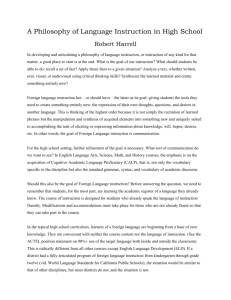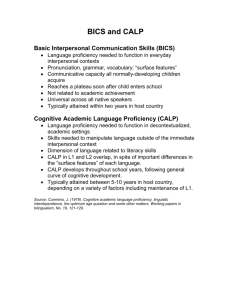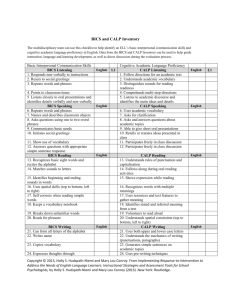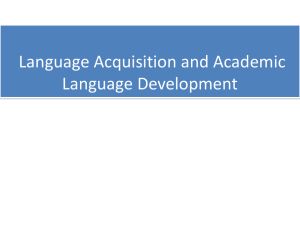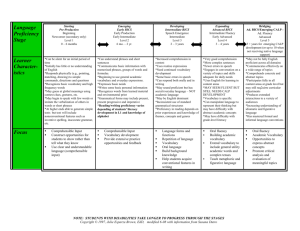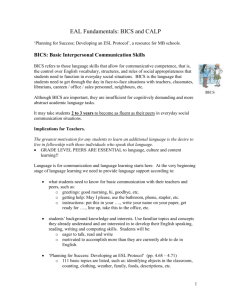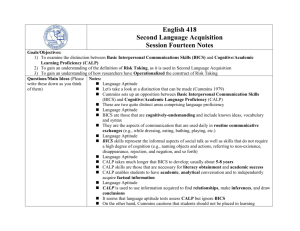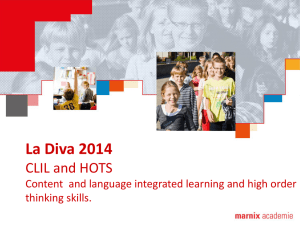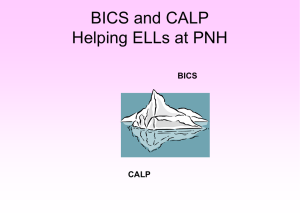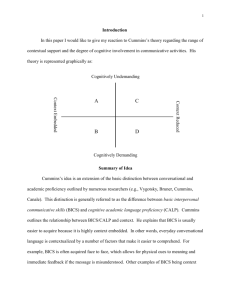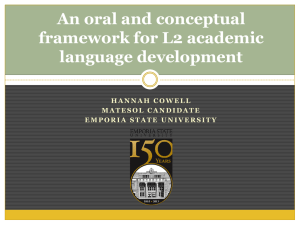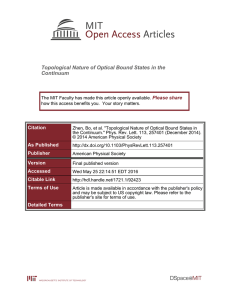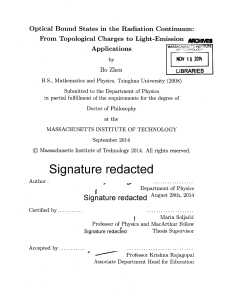EL Strategies
advertisement
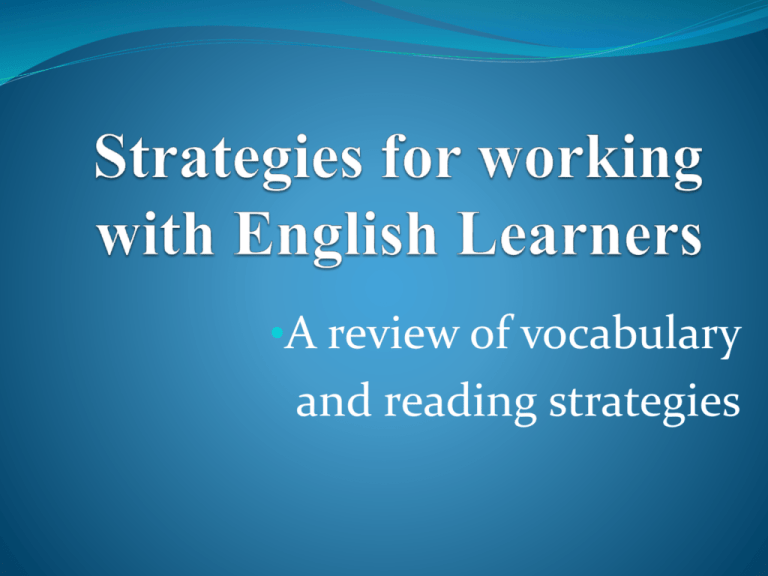
•A review of vocabulary and reading strategies A Review of BICS and CALP What is BICS? Basic Interpersonal Communication Skills Conversational language Examples of BICS: Talking with family/friends Shopping Eating at a restaurant Performing simple classroom chores What is CALP? Cognitive Academic Language Proficiency Academic language Examples of CALP: Lectures Textbooks Lab reports/research papers Oral presentations BICS & CALP More than just acquiring words! BICS also involves: Non-verbal communication Facial expressions Posture Gestures CALP also involves: Thought processes Categorizing Comparing Analyzing Comparing BICS & CALP BICS is cognitively undemanding Simple sentence structure Easy to understand CALP is cognitively demanding Complex sentence structure Specialized vocabulary Abstract Comparing BICS & CALP BICS is context embedded Concrete examples Cues CALP is context reduced Few or no cues Abstract Vocabulary Strategies GRAPHIC ORGANIZERS Graphic Organizers Graphic organizers may come in a variety of forms such as: Vocabulary Charts Bubble Maps Flow chart Venn Diagram Vocabulary Chart May contain such information as: Picture Definition Antonym/Synonym Number of syllables Part of speech BUBBLE MAPS Important Concept Important Concept Vocabulary Term Important Concept Picture At your table, work together to create a bubble map for: Important Concept Important Concept Data Important Concept Picture Android Data Cannot feel emotion Star Trek -The Next Generation VISUAL WORDS Visual Words Creating a visual interpretation of the term incorporating the word with it’s definition. Visual Words Visual Words Visual Words Visual Words At your table, create a visual word for a vocabulary term related to your curriculum. VOCABULARY GAMES Vocabulary Games Flashcards Scrabble Pictionary Hangman “Guess Who” Try using www. quia.com (students “play the part of a vocabulary term and answer questions about who they are) Reading Strategies Reading Strategies Cloze Assignments Reading assignment with blanks in the text accompanied by a word bank. Students work in groups to discuss and place all words in the appropriate places throughout the text. 1. Connect to the Text 2. Ask Questions 3. Expand Vocabulary 4. Predict & Prove 5. Sense It 6. Decide What’s Important 7. Make Inferences Then Draw Conclusions 8. Summarize and Synthesize 9. Check Your Understanding 10. Build Fluency Making Connections: A Bridge From the New to the Known Text to Self Text to Text Asking Questions: The Strategy That Propels Readers Forward “Questioning is the strategy that keeps readers engaged. When readers ask questions, they clarify understanding and forge ahead to make meaning. Asking questions is at the heart of thoughtful reading.” Harvey and Goudvis “The larger the reader’s vocabulary (either oral or print), the easier it is to make sense of the text.” Report of the National Reading Panel “Research suggests that when students make predictions their understanding increases and they are more interested in the reading material.” Fielding, Anderson, Pearson, Hanson Visualizing: A Tool to Enhance Understanding “Visualizing is a comprehension strategy that enables readers to make the words on a page real and concrete.” Keene and Zimmerman “Thoughtful readers grasp essential ideas and important information when reading. Readers must differentiate between less important ideas and key ideas that are central to the meaning of the text.” “Inferring is at the intersection of taking what is known, garnering clues from the text, and thinking ahead to make a judgment, discern a theme, or speculate about what is to come.” Harvey and Goudvis The Evolution of Thought Synthesizing is putting together separate parts into a new whole….a process akin to working a jigsaw puzzle. Harvey and Goudvis “If confusion disrupts meaning, readers need to stop and clarify their understanding. Readers may use a variety of strategies to “fix up” comprehension when meaning goes awry.” Harvey and Goudvis “Fluency is important because it frees students to understand what they read.” Report of the National Reading Panel
